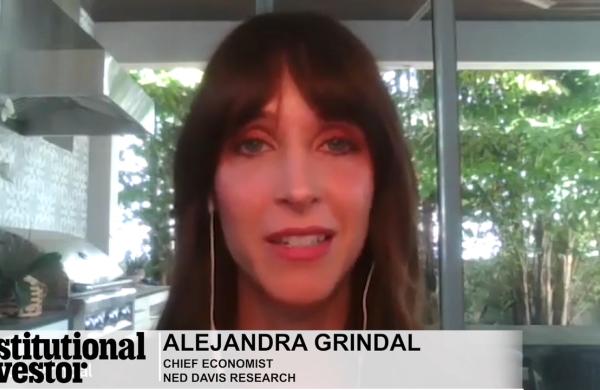The decoupling theory may have merit, after all. Despite talk of a U.S. recession and worldwide economic slowdown, global creditworthiness has actually improved in the past six months as strong gains by resilient emerging-markets economies have offset backsliding in industrialized countries.
As the global credit crisis has continued to wreak havoc on financial markets, the credit ratings of virtually all the developed countries across North America, Western Europe and Asia have dropped in the past six months, according to Institutional Investor’s exclusive semiannual County Credit survey.
But surprisingly little of that gloom and doom has seeped into the emerging markets, whose gains push the overall global credit rating up 0.7 point in the past six months, to 47.3 on a scale of zero to 100. When the survey’s three new countries — Equatorial Guinea, Fiji and Suriname — are factored in, the rating is up 0.4 point.
High commodities prices and strong domestic demand have helped emerging markets fend off the malaise that started with the U.S. subprime crisis and continues to spread, says Dominik Thiesen, a senior economist at Dresdner Bank in Frankfurt. “And they don’t have the problems that the industrial countries have with the financial markets — they’re not investing in the U.S. — so the past few years have been a good time for those markets.”
Sovereign-risk experts who participated in the survey boost the credit ratings for 109 countries, with 67 of them climbing by at least a point. Only 26 of the 62 countries whose ratings fall drop by a point or more.
Long the center of the economic universe, the U.S. now languishes in 13th place, behind even Denmark and Austria. But despite its troubled economy and weakened banking sector, the country’s rating falls just 0.8 point, to 93.0, a fairly minor drop considering the widespread fears of further bleeding in the financial sector. The U.S. is “beginning to look a bit like No. 1–ranked Switzerland — more of a safe haven than a driving force,” says one banker in Vienna who spoke on condition of anonymity.
Western Europe falls 0.9 point, to 90.2, pulled down by weak housing markets in the U.K., which slips 0.7 point, to 93.3, and Ireland, down 2.0 points, to 91.6. The European Union’s southern tier has also weakened considerably. Greece’s rating drops 1.3 points, Portugal’s falls 1.2 points, Italy loses 0.5 point, and Spain slips 0.3 point. “These Mediterranean countries tend to be the growth laggards of Europe,” says Laura Sarlo, a sovereign-risk analyst at Loomis Sayles & Co. in Boston. “If growth is slowing down globally, added pressure will be sensed there.” Meanwhile, Iceland’s rating plunges a whopping 6.2 points, the biggest drop by far in the survey, because of “massive current-account deficits and banking sector problems,” says Sarlo.
There are also declines in the industrialized countries of Asia, with Japan falling 0.8 point, Australia dropping 1.2 points, Singapore slipping 1.2 points and New Zealand losing 2.2 points. Australia and New Zealand are both big commodities exporters, but the negative pressures on their economies have been too great, says Sandra Utsumi, assistant director of fixed-income analysis at Espírito Santo Investment in Lisbon. “They’re facing the problem of strong currencies, rising inflation and the prospect of increasing interest rates, so their growth potential is less optimistic than in the past few years.”
But there has been good news to offset the weakness in the industrialized countries. Latin America leads the gainers among emerging markets, with its overall credit rating climbing 1.5 points. In total, ratings for 26 of the 28 countries in the region rise, with 21 of those up at least a full point. After “a long period of growing up,” Latin America is making the most of strong prices for commodities, including oil, metals and agricultural products, says Dresdner Bank’s Thiesen. “Everything is going well for these countries.”
The biggest advancers in the region are Brazil, which surges 5.2 points, and Peru, up 4.8 points. Each got a bump when its debt was upgraded to investment grade in April. Six of the top ten gainers in the survey are Latin American or Caribbean countries. Even Bolivia rises 3.5 points, and Venezuela adds 4.3 points as its oil revenues offset unease about President Hugo Chávez’s plans to nationalize key sectors of the economy.
In developing Asia, China’s economic engine continues to drive up its credit rating, which rises 1.3 points, to 77.8. The rest of Asia’s emerging markets show relatively modest change, with only six of the two dozen developing nations moving by a point or more. The gainers include the Philippines, Indonesia and Mongolia, which rises 6.0 points. The two most notable declines are Thailand, which drops a point on concerns over political uncertainty and a slowdown in tourism, and Vietnam, which drops 1.7 points amid concerns about currency devaluation.
Oil continues to fuel gains in much of the Middle East and North Africa. That area’s 1.4 point rise is the second-highest regional gain. There are two standouts: A surge of optimism about Iraq sends its rating up 8.8 points — the biggest increase in the survey — and the United Arab Emirates sees its rating climb 6.8 points. The U.A.E. “is a country that is diversifying its activities much more than the other oil countries,” says Espírito Santo’s Utsumi. Elsewhere in the region, Saudi Arabia advances 1.7 points, Qatar by 1.6 points, Kuwait by 0.7 point and Bahrain by a modest 0.5 point. Being an oil producer isn’t enough to help Algeria, which falls 1.3 points on concerns about the stability of its political and governmental institutions.
The commodities story has also helped sub-Saharan Africa. Its overall regional rating rises 0.7 point, to 25.1. Oil boosts Nigeria and Angola, while commodities push up Côte d’Ivoire, Ghana and several others. The region’s biggest economy, South Africa, falls a point, however. Chris Thomsen, a managing director and head of country risk at Wachovia Securities in Charlotte, North Carolina, cites growing political and security concerns about the country. There are also power shortages, “which are a drag on not only current production but also future investments,” he notes.
The regional rating for Eastern Europe and Central Asia rises 0.5 point, with Russia up 3.1 points on the back of its oil bonanza. But Kazakhstan’s oil production is outweighed by the squeeze on its banks from the global credit crisis; the country’s rating falls 2.3 points. Experts say it is too soon to speculate on the impact that Russia’s invasion of Georgia will have on those countries’ ratings, but Georgia has been making gains recently. Its rating climbs a smart 4.8 points in the recent survey, which was conducted before the conflict erupted.
Meanwhile, the Baltics continue to fall. “These are countries with large current-account deficits, and their banking sectors are very reliant on foreign funding,” notes one Austrian banker. “Any time there is a global slowdown, people are looking for vulnerability in the emerging markets, and one of the first things to stand out is someone with a fixed exchange rate,” — a reference to the Baltic countries’ euro pegs.
Although many emerging-markets countries appear immune to weakness in the major countries, some sovereign-risk experts say the good times won’t last. If commodities prices have indeed peaked, as many market watchers speculate, the contagion factor could soon take hold. “The problems in the industrialized countries will result in fewer current-account surpluses in the emerging markets, and rising current-account deficits, meaning bigger problems in the future on the liquidity side,” says Dresdner Bank’s Thiesen. “We are now seeing the best for the emerging markets.” Wachovia’s Thomsen concurs: “Most self-respecting international observers feel that this talk of decoupling is overdone.”






